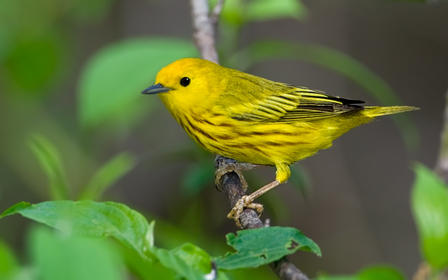
Dendroica petechia
SUBFAMILY
Parulinae
TAXONOMY
Dendroica petechia Linnaeus, 1766, Barbados. More than six
subspecies.
OTHER COMMON NAMES
English: Summer yellow bird, wild canary; French: Paruline
jaune; German: Goldwaldsдnger; Spanish: Reinita Amarilla.
PHYSICAL CHARACTERISTICS
4.5–5.5 in (11.4–14 cm). Primarily bright yellow bird with
olive hint on upperparts. Breast of male is streaked with rusty
color, female has no or only light streaking. Two yellow wing
bars are present on its yellow-and-olive-colored wings.
DISTRIBUTION
Breeds in most of North America from Alaska and far northern
Canada south to northwest Mexico. Winters from Mexico to
Peru.
HABITAT
Often seen in gardens, its wild habitat includes woods and
brushy areas near water.
BEHAVIOR
Songs are bright and repeated during the breeding season and
beyond, often beginning before sunrise. The songs draw the
attention of birders, but the birds seldom sit still long enough
for a thorough viewing.
FEEDING ECOLOGY AND DIET
Mainly arthropods.
REPRODUCTIVE BIOLOGY
Begin mating shortly after arriving on the breeding grounds in
early spring. Occasionally females will socially pair with one
male, but mate with another. Eggs can be sired by either male.
Nests are typically constructed of grass and plant materials in
the crook of a branch about 6–8 ft (1.8–2.4 m) above the
ground in small trees or shrubs. Eggs number four or five, often
have a grayish or greenish white hue, and hatch in about a
week and a half.
CONSERVATION STATUS
Not threatened. Their numbers, however, have been affected by
cowbird brood parasitism. Yellow warblers often readily rear
cowbird young, but occasionally will reject the parasitized brood
altogether and built a new nest, often on top of the old one.
SIGNIFICANCE TO HUMANS
None known.
Photo Gallery of - Yellow warbler
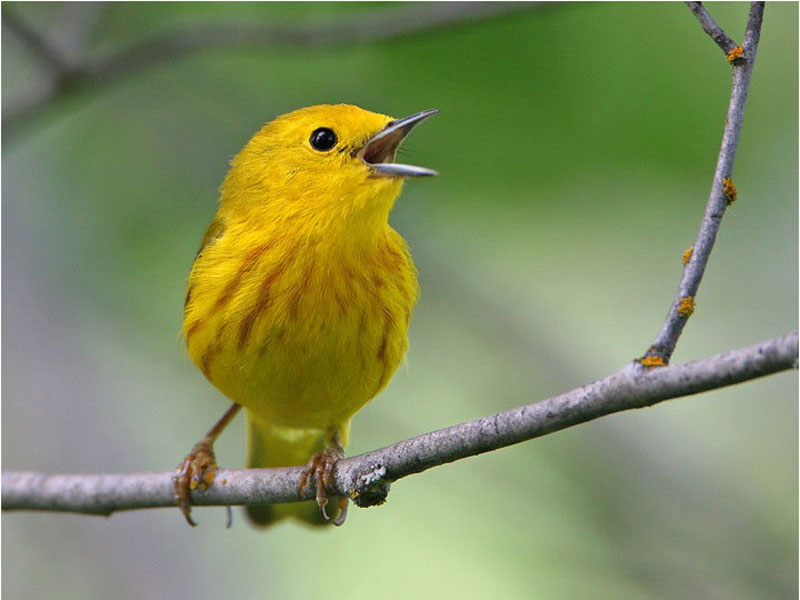
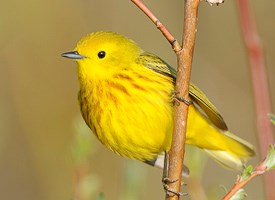
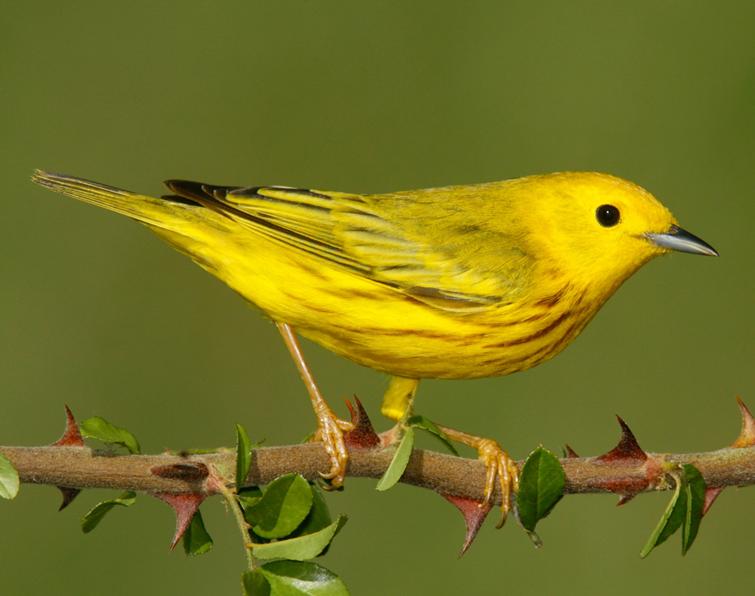
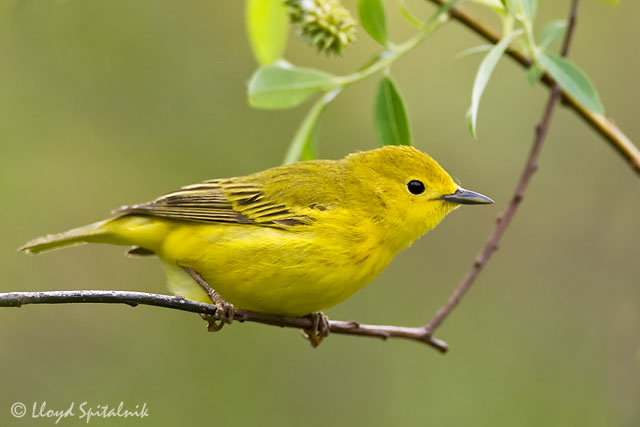
 Animalia Life
Animalia Life